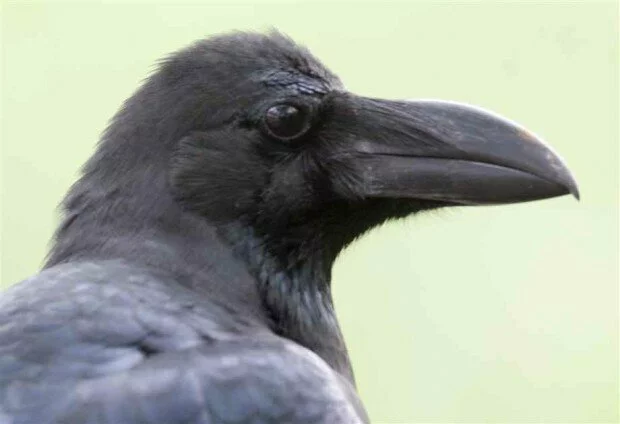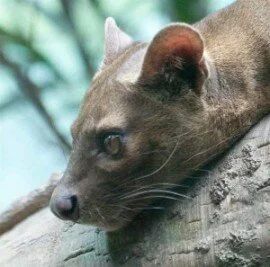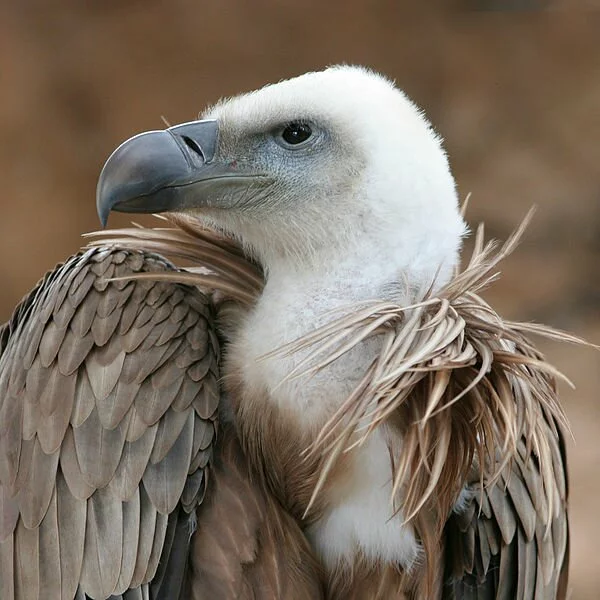African Wild Dogs: The Savannah’s Elite Hunters
The African savannah teems with a great variety of impressive and fascinating creatures. Among these animals are some of the most recognizable and renowned, such as the mighty elephant and the majestic lion. Yet some equally interesting species are often overlooked in the studies of African ecosystems, species which possess incredible qualities of their own. Among these animals are the beautiful and formidable African wild dogs. These pack hunters, essentially the wolves of Africa, are among the most intelligent of all animals, as well as among the most lethal. In the merciless world that is the African wilderness, cooperation may very well be the greatest method to survival, and these wild dogs excel in just that. From cunning hunting tactics to a surprisingly sophisticated social structure, these rare canines definitely have what it takes to hold their own in this dangerous habitat.
The African wild dog (Lycaon pictus) is certainly a sight to behold. Its Latin name means “painted wolf,” and upon observing these animals, one can see why they were assigned this name; scattered throughout these canines’ bodies are splotches of black, red, brown, yellow and white (the specific pattern of this coloration is unique from one individual to another). Their muzzles are of a black coloration while their tails commonly end with a white tip. Usually, there is also a dark section of fur on their heads.[1] African wild dogs possess short yet shaggy hair, with the fur being somewhat longer at the end of the tail and around the throat.[2] Though size can vary considerably from one individual to another, African wild dogs generally resemble medium-sized domestic dogs; members of this species reach 24-31 inches in height at the shoulders with a head and body length of 30-44 inches and a weight of 38-79 lbs.[3] They are lean and muscular animals with long, slender legs. African wild dogs possess rather large and rounded ears in comparison to several other canines, as well as four digits in each foot.[4]
The species was one much more numerous and widespread; as late as 1983, populations of these dogs could be observed throughout nearly all of Africa, minus the far northern and southern areas and dense, tropical rainforests. By 1996, however, viable populations only occurred in Tanzania, extreme northeastern South Africa, most of Botswana, parts of Zimbabwe, and small sections of Namibia, Angola, and Zambia. Furthermore, in many of these countries, African wild dogs survive only in national parks and similarly protected areas. Savannahs and open woodlands are the species’ preferred habitats, though African wild dogs can be quite flexible in their habitat needs (having once spread throughout most of Africa). The species has been observed ranging from the Sahara desert to the Alpine regions of Mount Kilimanjaro.[5]
African wild dogs, like many canines, live in packs. These groups can consist of anywhere from 5 to as many as 60 animals.[6] Before the decline of the species’ populations, packs of up to 100 animals were also recorded. However, a typical modern day pack contains 7-15 individuals. An alpha male and alpha female make up the dominant pair of the pack. Furthermore, there exist separate dominance hierarchies for the remaining males and females. Female dogs often leave the pack at around 2.5 years of age in order to join packs which do not already possess adult females. Meanwhile, half of a pack’s male dogs will also leave to form packs of their own. Since it is common for more females to leave a pack than males, groups will usually consist mostly of male animals.[7]
The social lives of African wild dogs are rather unique and more advanced than in many other social mammals. Pack members cooperate in the caring of not only their young, but also of wounded, sick, and older members who are not able to hunt. This is an incredible social trait, as many other social animals will often leave behind handicapped group members to die. Apart from the occasional fight between a dominant female and subordinate female over breeding rights (as only the dominant pair can mate), there is relatively little aggression within African wild dog packs.[8]
Probably one of the most recognizable displays of their social skills comes into play shortly before the dogs set out to hunt, an elaborate ritual known as “the meet.” This event is initiated when a few individual dogs leave their resting places and approach other members of their pack. At first, all that takes place is sniffing and the licking of each other’s muzzles. Soon, however, juvenile dogs arrive at the scene and begin to run about and beg for food by emitting odd, bird-like calls. This excites the pack’s remaining members, which then join the gathering and begin to greet one another. Subordinate members must elicit spontaneous appeasement gestures to higher ranking dogs during this time. Should they fail to do so, they are immediately threatened to carry out the gestures by their higher-ranking pack members. The dogs become more excited as the meet continues, and soon they are all bouncing and leaping at one another. Play-fighting soon ensues, with dogs rearing up to paw at each other or pushing one another onto the ground. After the whole pack is fully assimilated into group activity, the dogs leave their area of rest and the hunt begins.[9]
As hunters, African wild dogs are truly remarkable in that, even in comparison to other formidable cooperative predators, they are among the most efficient of hunters. These canines are capable of reaching speeds up to 40 mph in their pursuit of prey. However, their common prey, such as springbok and kudu, are often capable of even higher speeds. This is where the dogs’ incredible endurance comes in; though they are not capable of reaching the incredible speeds of their prey (indeed, many other predators also cannot), African wild dogs are able to maintain speeds of up to 30 mph for up to 3 miles. This makes escape rather difficult for their agile prey, and so their prey will often attempt sharp turns in order to throw off the dogs, which struggle to make the same quick turns. Yet the clever canines are prepared for these tactics, with the secret lying in the structure of the hunting group; the dogs at the rear of the pack can usually see this act and respond quickly by cutting off their prey in the new direction it is running to. By maintaining this style of coordinated hunting, the dogs are thus able to slowly gain ground while keeping up a consistent speed. Eventually, the prey is no longer able to shake off the tenacious dogs and is brought down by the predators. In a style that may seem very cruel to some, the dogs proceed to disembowel and tear their prey apart while it is still very much alive (a behavior that has resulted in many people taking a dislike to the species). Other predators, such as cheetahs and lions, commonly kill their prey by clamping their jaws around the animals’ throats and suffocating them. It may come as a surprise to some that the asphyxiation method employed by these predators takes longer to kill prey than does the African wild dogs’ more violent style of killing. In fact, it has been suggested that the prey of these dogs commonly enter a state of shock as they are attacked and thus feel very little pain in what is already a quick death.[10] The combination of intelligence, speed, and endurance makes these dogs incredible predators. In fact, while lions (formidable and terrifying predators by any standards) succeed in 30% of their hunts, African wild dogs make a kill in nearly 80% of their hunts.[11]There is no aggression among pack members during feeding, and the dogs will even tolerate scavengers at their kills (a truly rare behavioral trait among animals). The only exception to this tolerance is the spotted hyena; the dogs often drive hyenas away from their kills, sometimes injuring or even killing them. The hunters return to the remaining members of their pack which were unable to assist in the hunt, such as the young, old, or sick. They then regurgitate some of their food in order to feed them.[12] What makes this behavior incredible is the fact that the dogs may not gain much from preserving older or weaker members of the pack, yet they do so anyway. This is a level of selflessness that is commonly attributed only to humans, yet here it is, built into the social structure of these incredible wild canines. Moreover, the African wild dog is the only carnivorous species known to allow juvenile hunters to feed first after a kill is made, whereas adults of other social carnivores tend to dominate their younger pack members in disputes over who feeds first.[13] This advanced social lifestyle gives African wild dogs an advantage over most other African species, greatly increasing their chances of survival in what is otherwise a very unfair and pitiless ecosystem.
The species reaches sexual maturity at about 12-18 months of age, though mating often occurs at a much later age. In fact, the youngest recorded reproduction of a female was at the age of 22 months. The breeding season lasts from January to May. As mentioned previously, only the pack’s dominant pair mate, and any subordinate females attempting to breed will be swiftly punished by the alpha female. Gestation lasts approximately ten weeks, with the pups usually being born between March and July. The litter sizes of these dogs can vary considerably from 2-20 pups, with small litters being more common to dogs in captivity. Females give birth to pups in grass-lined burrows (often the abandoned homes of aardvarks). The pups will remain with their mother in this hole for 3-4 weeks. Upon being led out of the den, they become the responsibility of the entire pack. From here on out, they are not only nursed by their mother, but by other females as well. Weaning can occur as early as five weeks for these pups, and they are then introduced to a diet of meat brought to them by the pack’s hunters. Another litter is eventually produced about 12-14 months later.[14]
The species’ great reduction in population numbers is the gradual result of a variety of different threatening factors. Habitat loss and fragmentation are the primary causes of their population reduction (as is the case with several other African species). However, there are other considerable causes for their endangered status. People often confuse this species with feral domestic dogs and shoot them on sight believing that they are merely extinguishing an unnecessary vermin. Livestock owners, however, feel threatened by the presence of these dogs due to their predatory lifestyle. In order to protect their livestock, they kill the wild dogs using guns, snares, and poisons. There is also the constant threat of disease, as rabies, distemper, and anthrax (often spread by domestic dogs) have been known to wipe out entire packs. Automobiles also kill many wild dogs in areas such as national parks and reserves. Furthermore, apart from the stresses caused by these factors, African wild dogs must continue to cope with their usual natural pressures. This includes competition with other predators, such as lions (which, for unknown reasons, are known to attack and kill the pups of wild dog packs) and hyenas. However, an equally great threat is the hatred from people that targets these dogs throughout their range. This hatred is based primarily on unfounded beliefs concerning the wild dogs’ “murderous” nature, similar to beliefs long held about wolves, coyotes, and foxes throughout North America. Due to this misconception, the species is not protected by several nations and is left vulnerable to local extinctions. Even the nations which do provide protection for the dogs only limit their protection to those within national parks and reserves. It is thus legal to kill African wild dogs which venture outside of protected boundaries, as they often do considering their wandering lifestyle. Due to this variety of threats, it should not come as a surprise that there are only an estimated 5600 adult wild dogs left in the wild. Researchers estimate that some populations are declining by as much as 20% every two generations. Should this continue uninterrupted, this beautiful species is likely to become extinct within the next 10-30 years.[15] The wildlife conservation organization, Defenders of Wildlife, is currently working to pass legislation that would assist in conserving 15 species of great cats and rare canines (including the African wild dog) that exist outside the U.S.[16] Though they remain one of the more obscure African predators, it appears that the African wild dogs’ needs are finally being addressed. Nonetheless, the future of the species remains uncertain and only time will tell whether these dogs will flourish once more or fall to the current pressures that they face.
Despite being among the lesser known of Africa’s great predators, African wild dogs are some of the most interesting of social mammals. A nearly unrivaled level of social behavior and effective hunting tactics keep these animals one step ahead of their competition and better suited for survival. They possess intelligence and parental skills like those of few other species. It is truly unfortunate, then, that these creatures face the threat of extinction. With their populations reaching critically low numbers, the future of the African wild dogs cannot be assured. Nonetheless, support for the species appears to be increasing as the myths of these once misunderstood animals slowly diminish and the reality of their nature is brought to light. Despite the stories of vicious dogs that kill their prey via torturous methods, the African wild dog is actually among the most efficient of nature’s predators and one of the few creatures to provide for old, sick, and disabled group members. It would be more than a shame to lose a creature such as this, an advanced animal possessing an incredible combination of beauty, intelligence, and power. Certainly, there are very few animals out there like the African wild dog.
[1] Mulheisen, Michael, & Allen, Crystal. “Lycaon pictus.” www.animaldiversity.ummz.umich.edu. http://animaldiversity.ummz.umich.edu/site/accounts/information/Lycaon_pictus.html (accessed December 30, 2011).
[2] “Wild Dog Foundation.” www.wilddog.hypermart.net. http://wilddog.hypermart.net/Home/Wild_dog_page/WildDog_WebSite/index.htm (accessed December 30, 2011).
[3] “African Wild Dog.” www.zoo.org. http://www.zoo.org/animal-facts/wilddog (accessed December 30, 2011).
[4] “Wild Dog Foundation.” www.wilddog.hypermart.net. http://wilddog.hypermart.net/Home/Wild_dog_page/WildDog_WebSite/index.htm (accessed December 30, 2011).
[5] “African Wild Dog.” www.zoo.org. http://www.zoo.org/animal-facts/wilddog (accessed December 30, 2011).
[6] “African Wild Dog.” www.honoluluzoo.org. http://www.honoluluzoo.org/african_hunting_dog.htm (accessed December 30, 2011).
[7] Mulheisen, Michael, & Allen, Crystal. “Lycaon pictus.” www.animaldiversity.ummz.umich.edu. http://animaldiversity.ummz.umich.edu/site/accounts/information/Lycaon_pictus.html (accessed December 30, 2011).
[8] Ibid
[9] “African Wild Dog.” www.zoo.org. http://www.zoo.org/animal-facts/wilddog (accessed December 30, 2011).
[10] “African Wild Dog.” www.predatorconservation.com. http://www.predatorconservation.com/wild dog.htm (accessed December 30, 2011).
[11] “African Wild Dogs.” www.defenders.org. http://www.defenders.org/wildlife_and_habitat/wildlife/african_wild_dog.php (accessed December 30, 2011).
[12] Mulheisen, Michael, & Allen, Crystal. “Lycaon pictus.” www.animaldiversity.ummz.umich.edu. http://animaldiversity.ummz.umich.edu/site/accounts/information/Lycaon_pictus.html (accessed December 30, 2011).
[13] “Wild Dog Foundation.” www.wilddog.hypermart.net. http://wilddog.hypermart.net/Home/Wild_dog_page/WildDog_WebSite/index.htm (accessed December 30, 2011).
[14] Mulheisen, Michael, & Allen, Crystal. “Lycaon pictus.” www.animaldiversity.ummz.umich.edu. http://animaldiversity.ummz.umich.edu/site/accounts/information/Lycaon_pictus.html (accessed December 30, 2011).
[15] “African Wild Dog.” www.zoo.org. http://www.zoo.org/animal-facts/wilddog (accessed December 30, 2011).
[16] “International Great Cats and Rare Canines.” www.defenders.org. http://www.defenders.org/programs_and_policy/policy_and_legislation/international_great_cats_and_rare_canines.php (accessed December 30, 2011).


